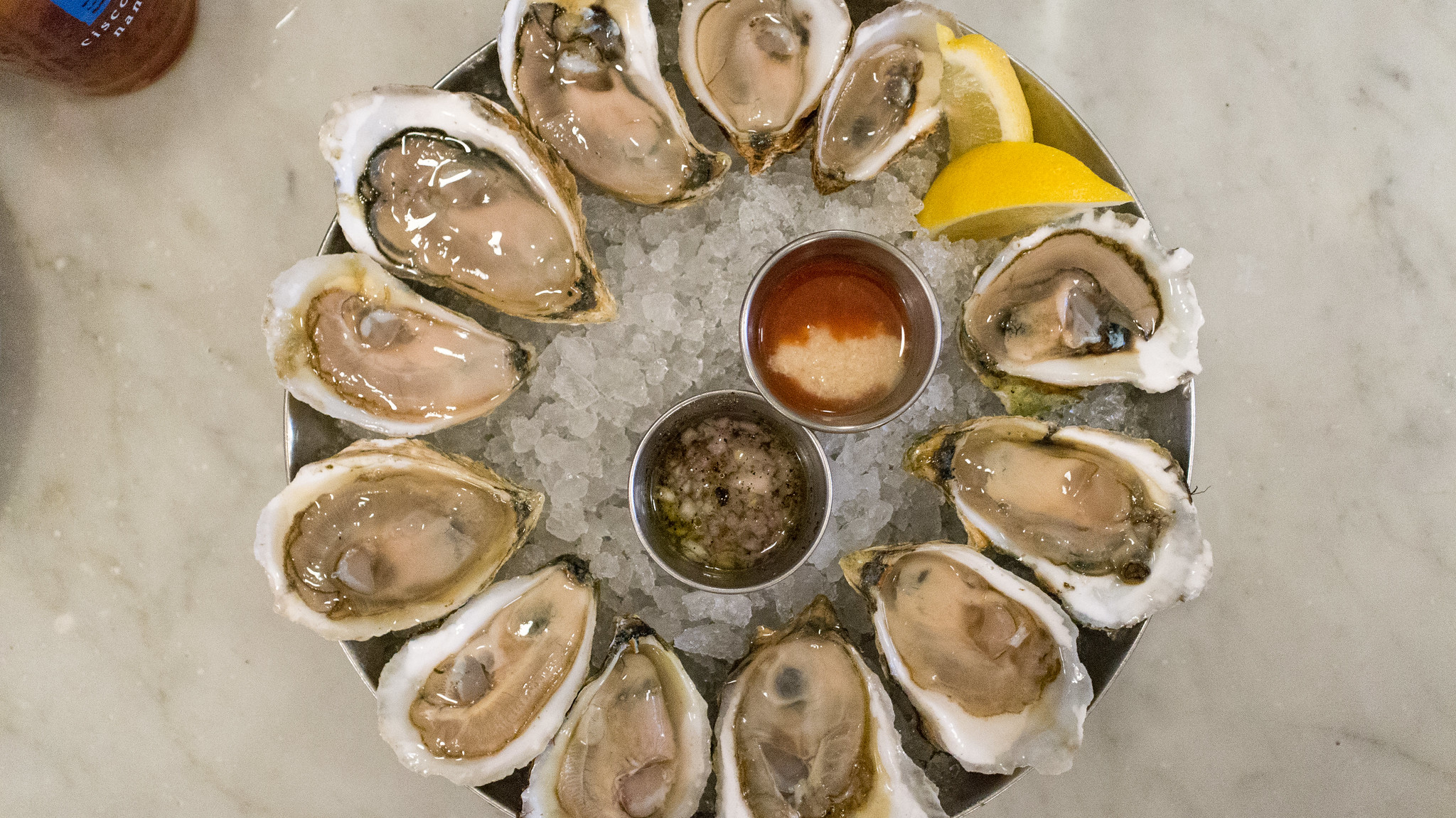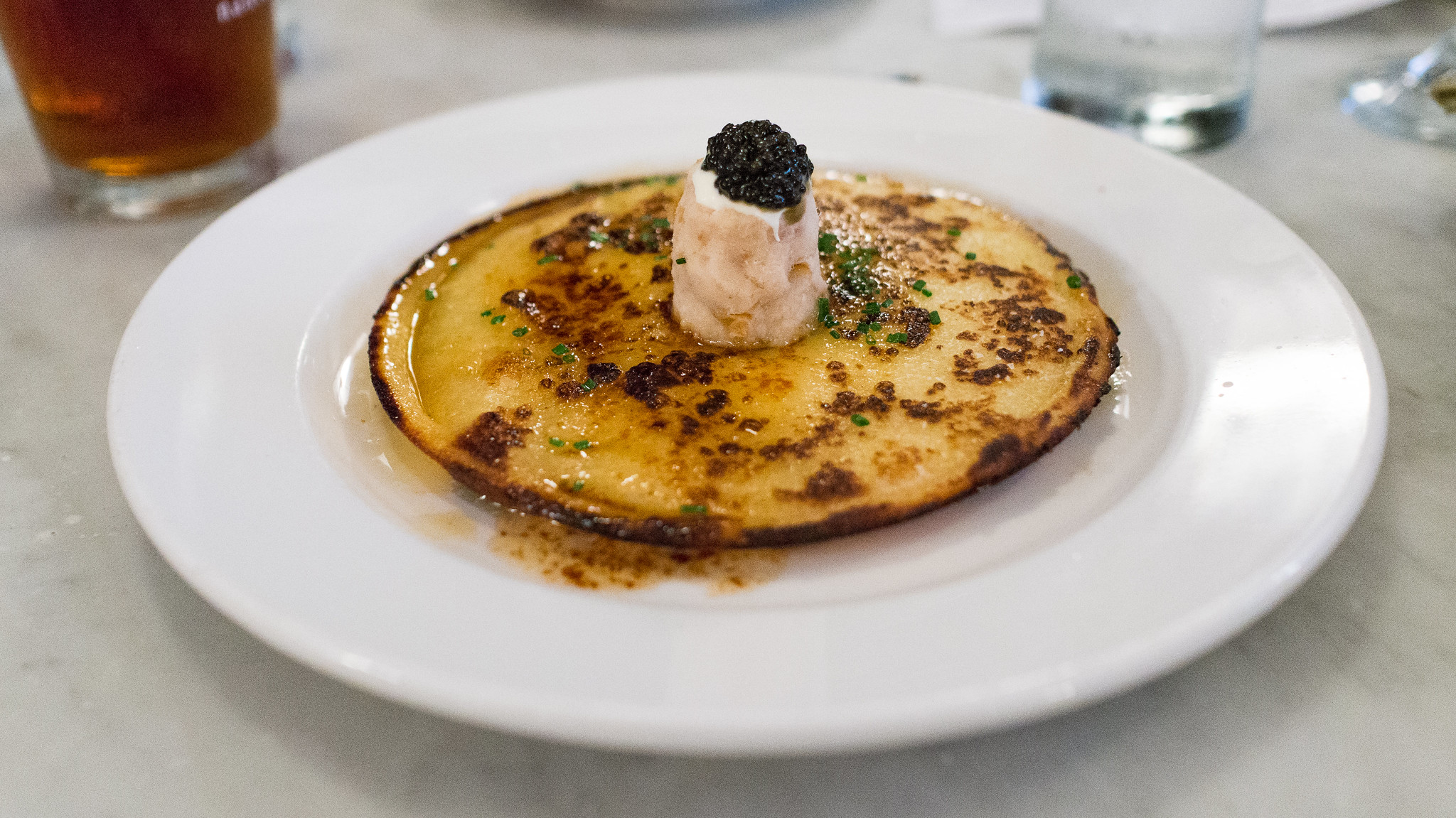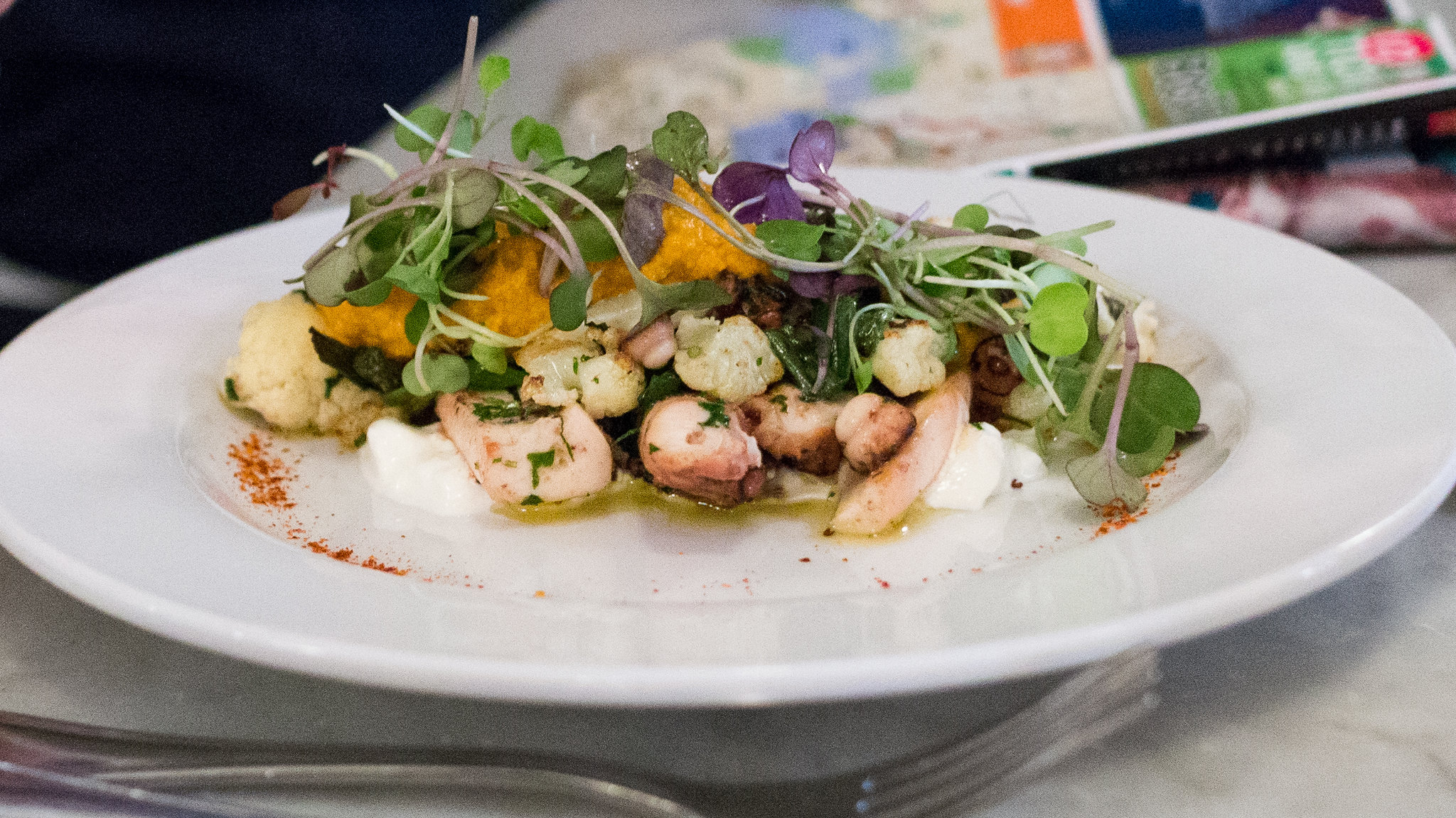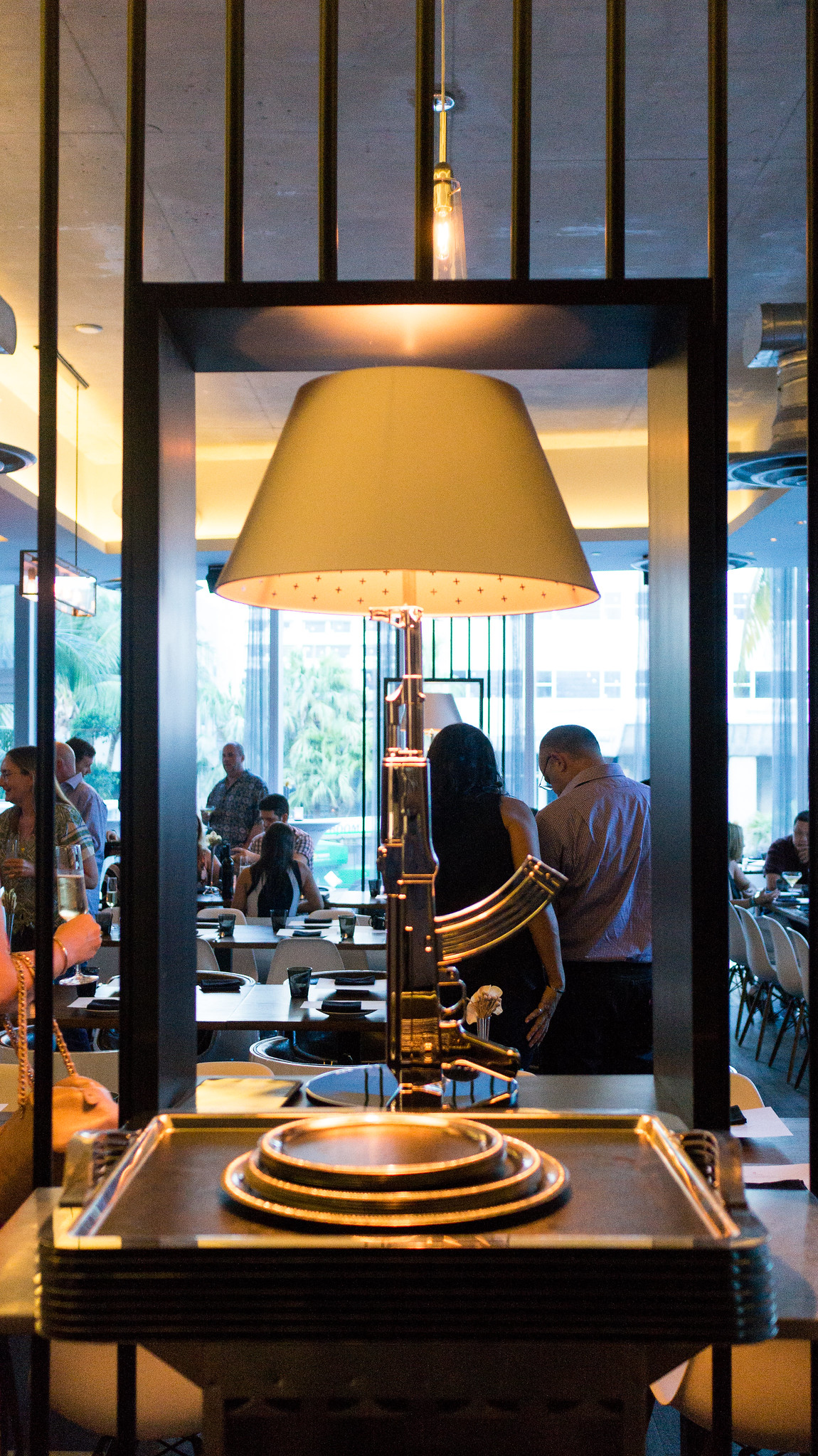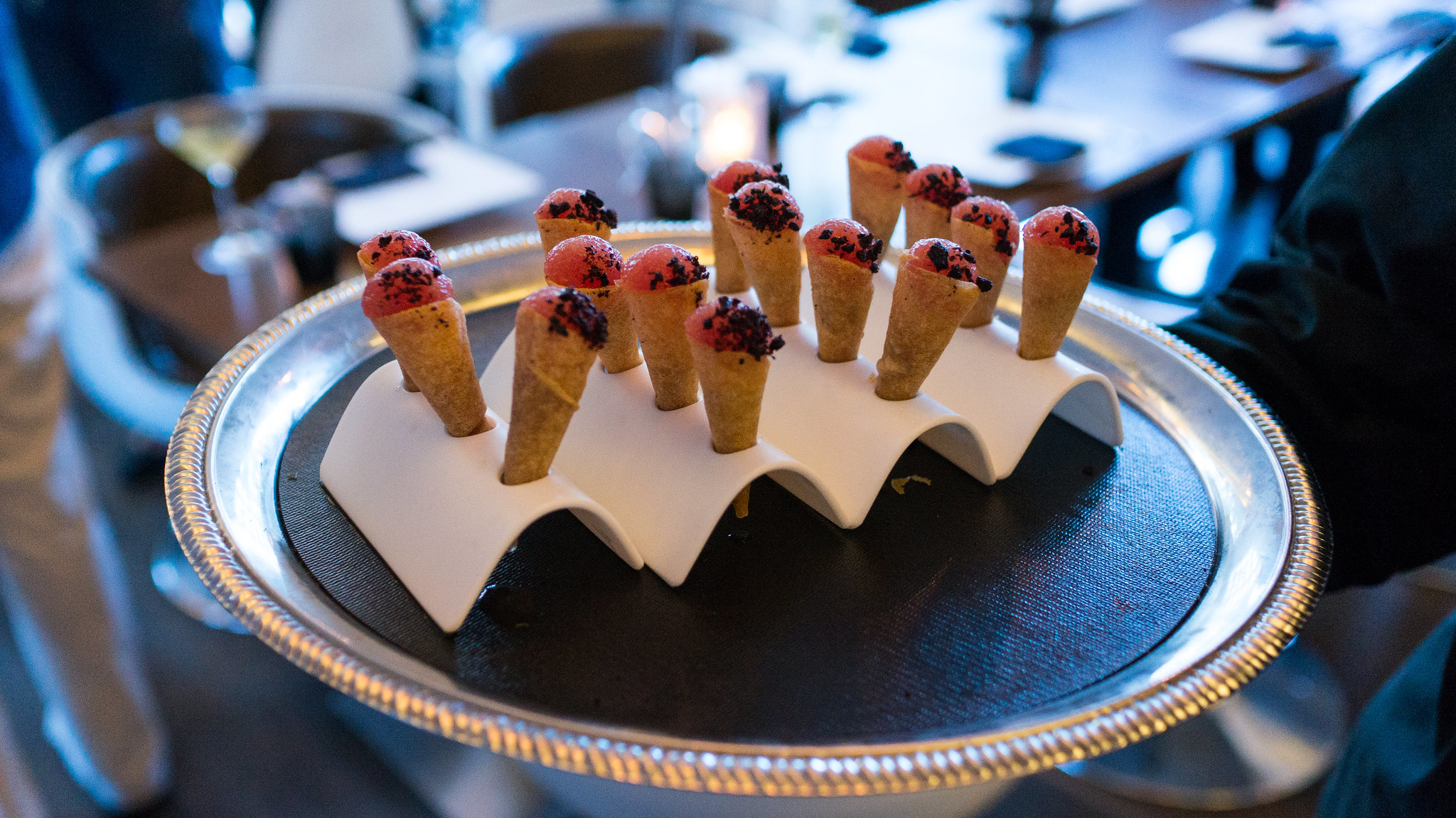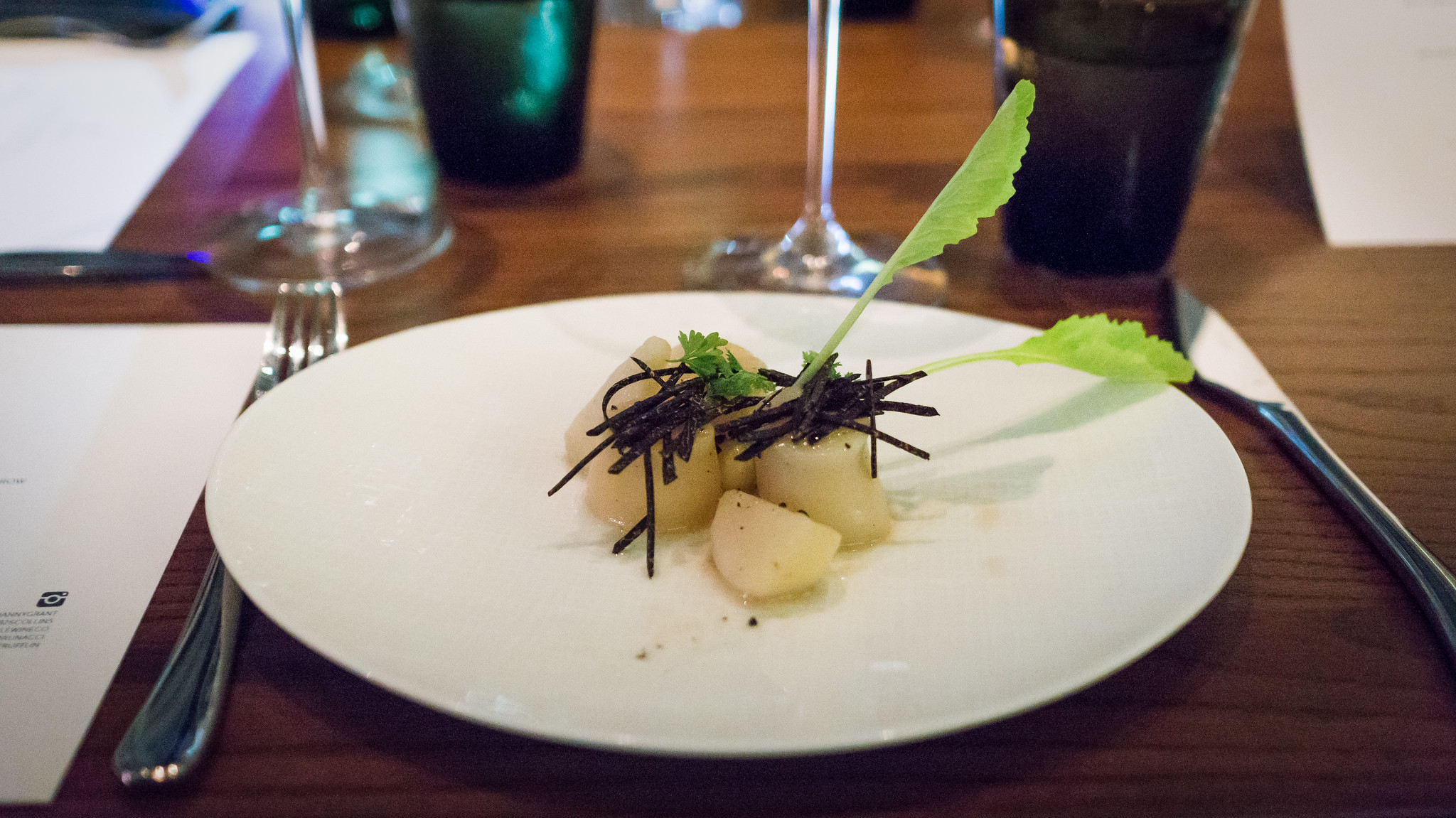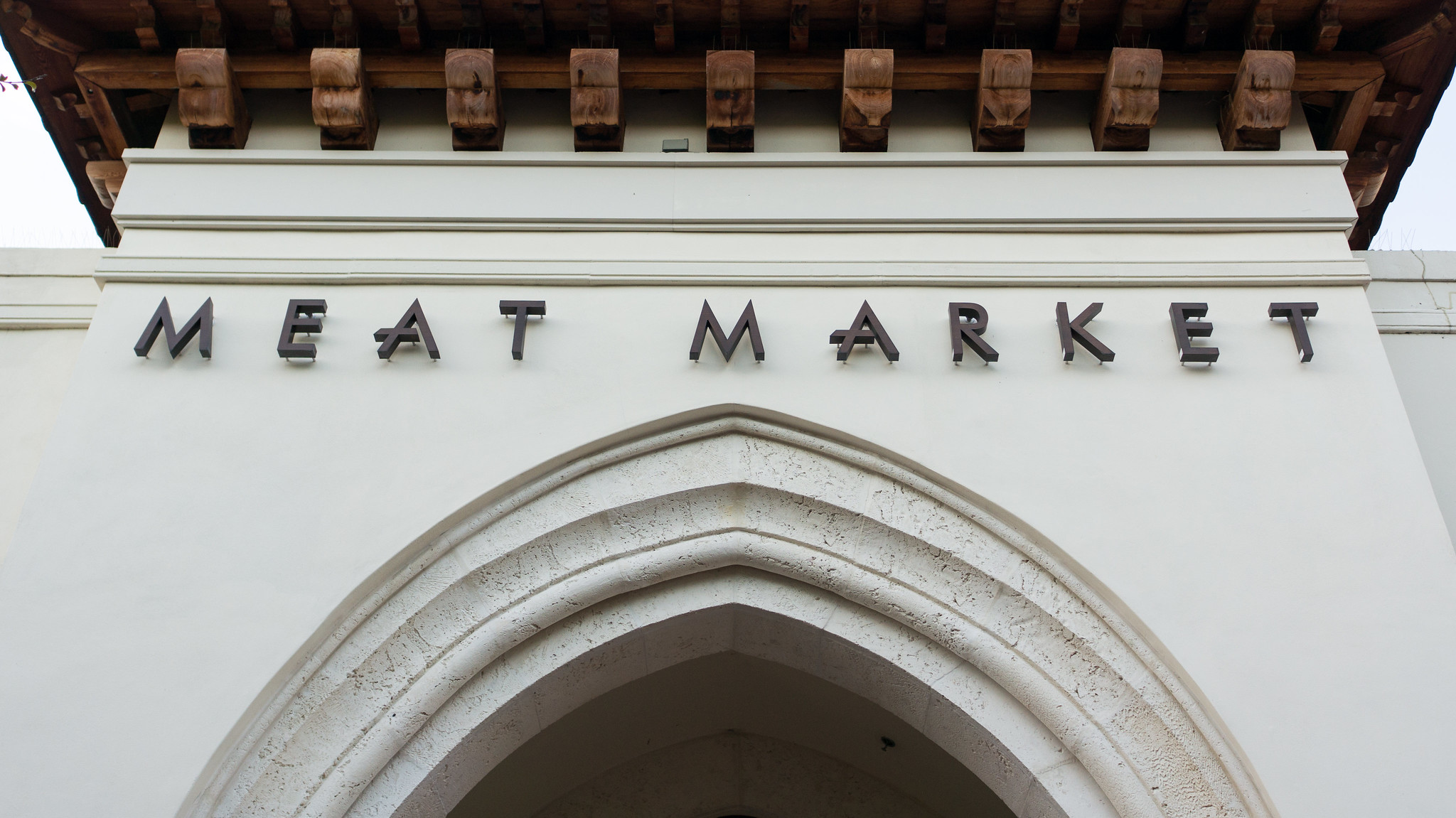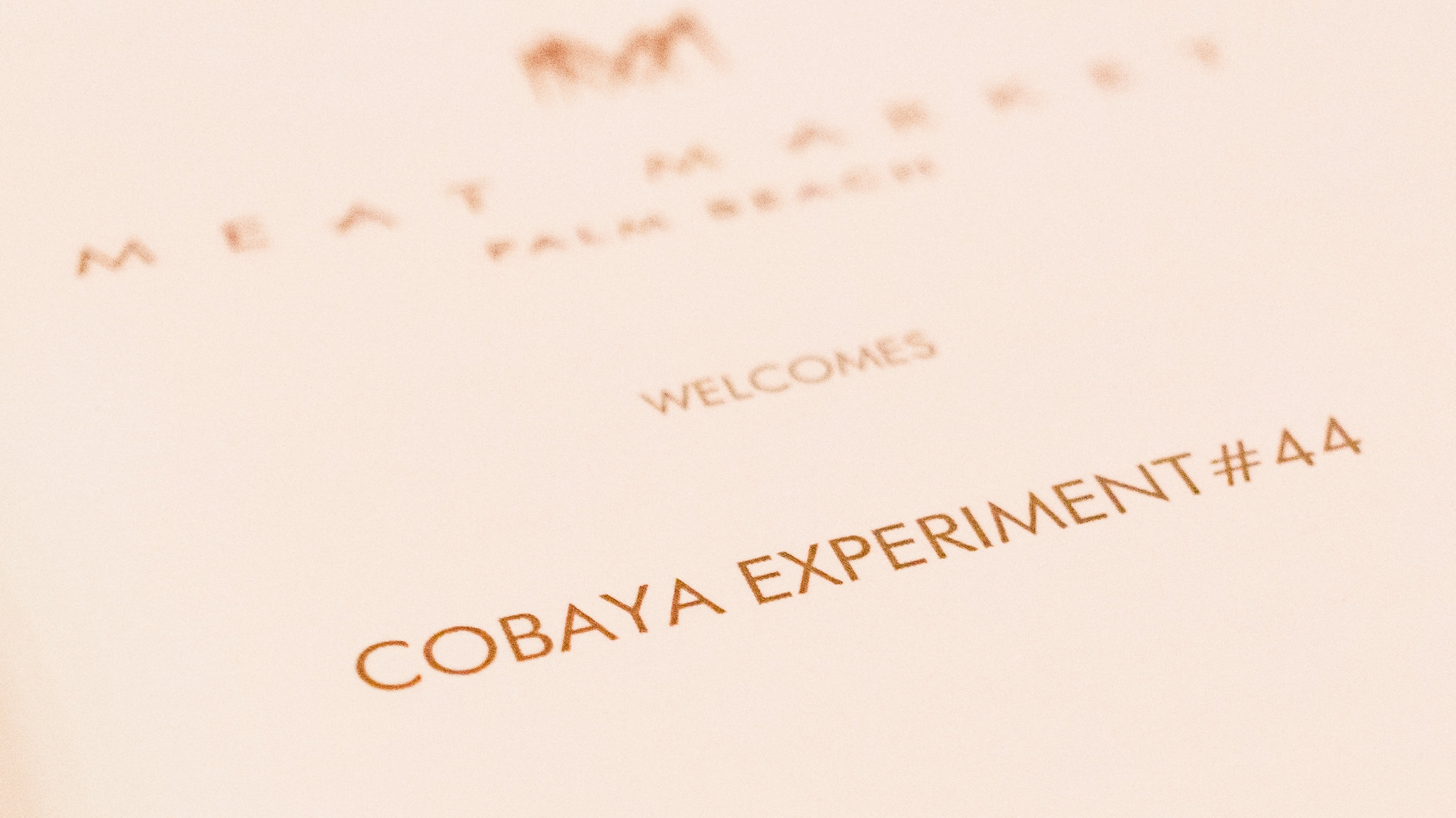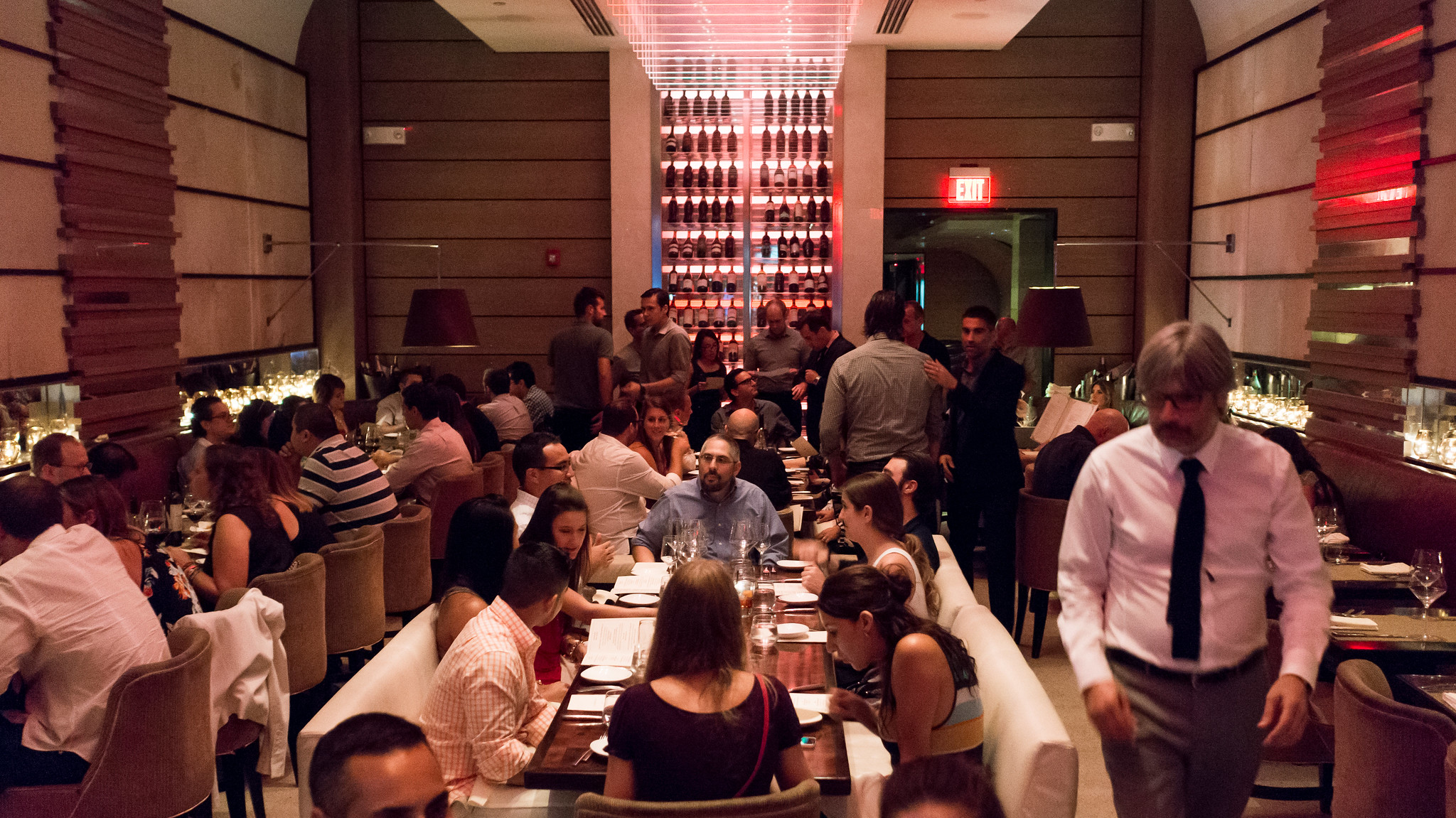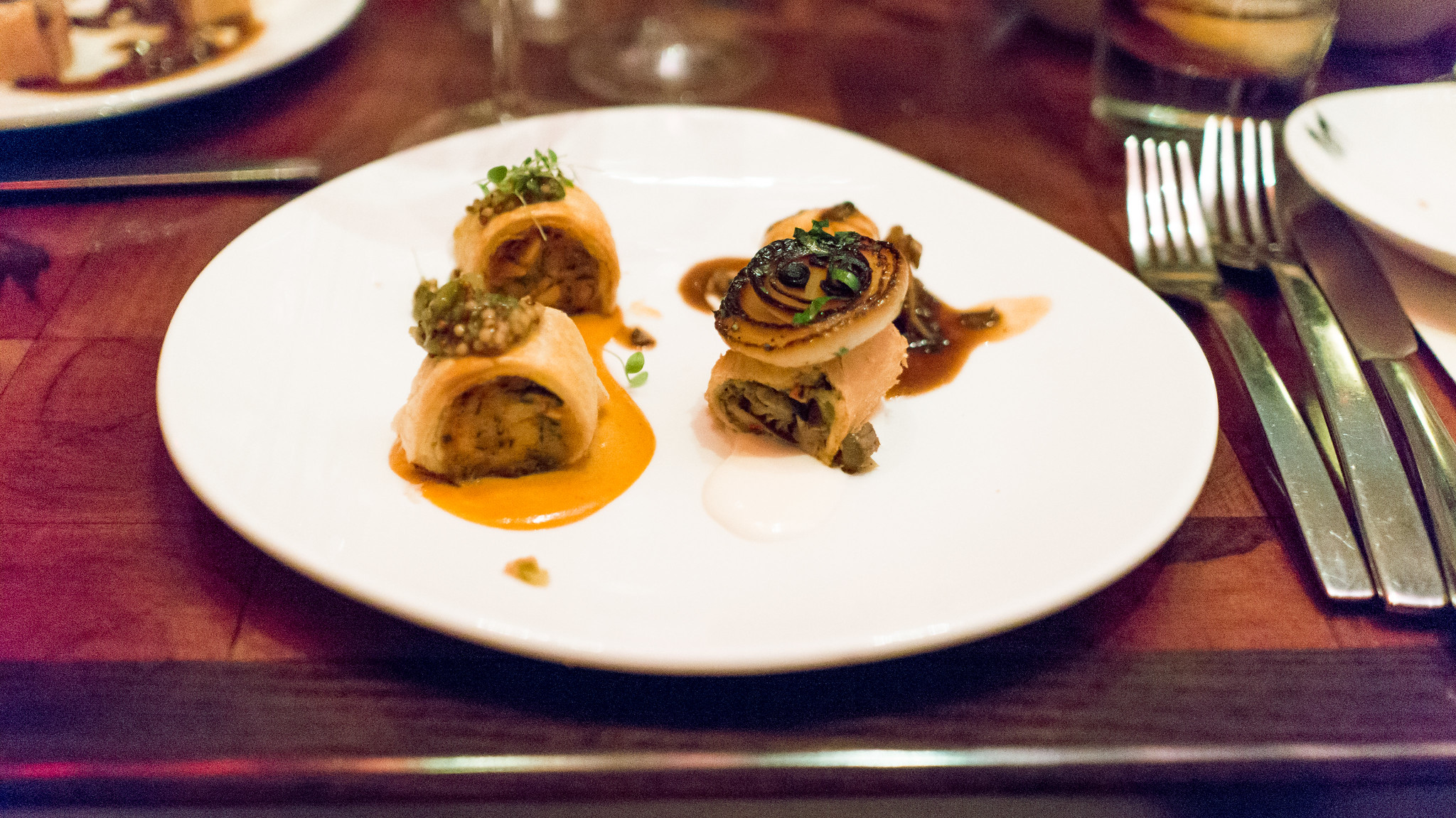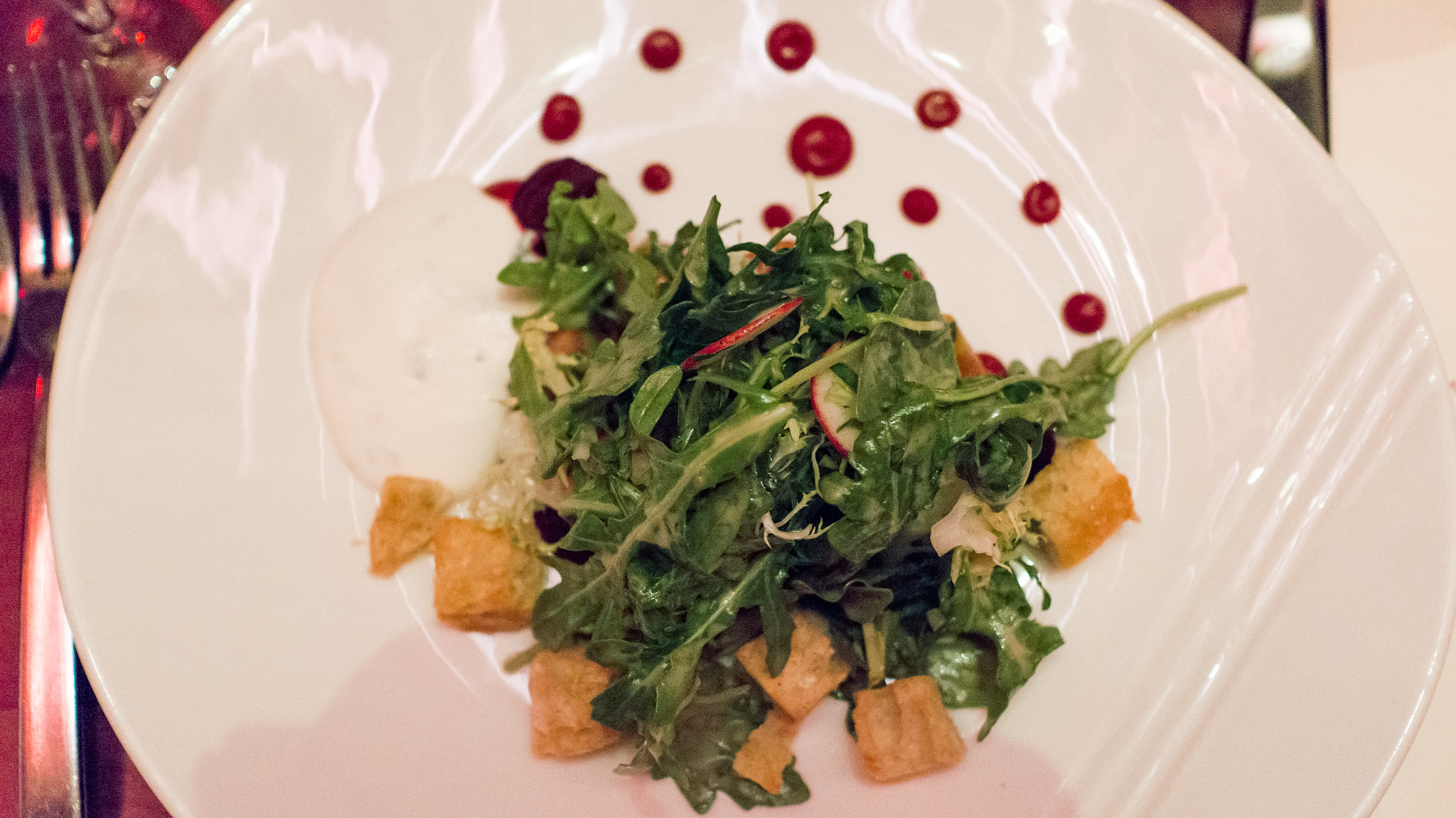The "to do" list ("to write," to be more precise) keeps growing longer and more intimidating. In the interest of paring it down, let me try to catch up on some of our latest excursions.
In the summer, we tend to head north in the interest of finding cooler climes than our ninety degree, ninety percent humidity weather here in Miami. This July included a long weekend in Toronto, which will be the subject of another report (the twitter version: a fun place to visit and a fun place to eat). August found us first in Boston, from where we headed up the coast to Maine, then across the border to Quebec City before wrapping up in Montreal.
Our Boston visit started with a place that's been open just shy of ten years, and has all the feel of a classic: Neptune Oyster Bar. We had fortuitous timing, squeezing in to seats at the end of the counter before the lines started to form for lunch (the tiny spot has only a couple dozen seats at tables plus another fifteen at the bar).
(You can see all my pictures in this Neptune Oyster Bar flickr set).
I can see why they're lining up. The oysters, with a choice from among a dozen primarily east coast varieties, were excellent. This particular dozen included, working clockwise from the lemon wedges, Wellfleet, Island Creek and Bee's River from Massachusetts, Browne's Point and Pemaquid from Maine, and Beausoleil from New Brunswick Canada.
But the oysters aren't the only draw here. This buttermilk johnnycake, topped with a mound of smoked trout tartare wearing a sturgeon caviar hat, then doused in melted honey butter, was a fascinating mix of earthy, smokey, fishy, salty and sweet flavors. I would have never guessed that the savory/sweet sausage/pancake breakfast type thing could be taken in an aquatic direction, but this worked. A Spanish-inspired grilled octopus salad, with crisp browned nubs of roasted cauliflower and a ruddy orange romesco sauce, was another good combination, light but hearty and full-flavored.
(continued ...)
Saturday, September 27, 2014
Tuesday, August 26, 2014
Cobaya 1826 with Chef Danny Grant
At Cobaya, we love when chefs have passions they wish to pursue. When we first started talking to Chef Danny Grant about doing a dinner, he told us his passion was truffles. Initially I was puzzled when he said he wanted to do a truffle-themed dinner in the dead of August, when I'm accustomed to only seeing – and being disappointed by – summer truffles.[1] But Danny said he was bringing in Australian black Perigord truffles, and that they were great.
Grant is the chef at 1826 Restaurant & Lounge, a restaurant, bar and lounge in the heart of South Beach that opened last year. Before coming to Miami to open 1826, he had made a name for himself in Chicago heading the kitchen at the now-closed RIA, which garnered two Michelin stars during Danny's tenure in 2011-12 (and during which time he also earned a "Best New Chefs" recognition from Food & Wine magazine). Danny's resume – and the samples of his cooking I've had from a visit to the restaurant and the dish he contributed to our Cobayapalooza dinner last month – gave me some confidence in his judgment. We let him go with it, and I'm glad we did.
The truffles – eight pounds worth, supplied by Truffle & Wine Co., whose VP of sales, Frank Brunacci, was in attendance – were a revelation for me. The company started cultivating Perigord truffles in Australia more than ten years ago, inoculating oak trees with DNA-tested Perigold truffle fungus (tuber melanosporum), and produced their first truffle seven years later. I don't know how you pitch that business plan, but I'm grateful someone supported it. Maybe it was luck of the draw, as the quality of truffles generally can vary considerably – but if these were only 90% as good as the best Perigord truffles I've had from France, they were 100% better than many of the muted, bland ones I've still paid top dollar for, with an intense, complex, musky aroma of earth and underbrush and smoke.
Here's what Danny did with them:[2]
(You can see all my pictures in this Cobaya 1826 flickr set).
As guests started to fill the dining room, a couple passed appetizers were circulated - kumamoto oysters bathing in a truffle-infused cream, and these Keller-style tuna tartare cornets topped with a dusting of citrus and black truffle.
There were six courses listed on his printed menu, but once everyone was seated, Danny also added this off-menu amuse bouche: a couple delicate foie gras and truffle filled dumplings, swimming in an ice wine consommé that was poured tableside. Really elegant and clean stuff, especially that limpid, golden-hued broth.
Aside from the hurdle of convincing diners that summer truffles can be as good as the winter varieties, an additional challenge is what you do with them. Many typical truffle recipes – risottos, pastas, beef w Perigord sauce – are heavy, winter dishes. Grant responded to that challenge with a delicate seafood dish that made perfect sense for a hot Miami summer. Sea scallops were poached in milk infused with aromatics and black truffle, then served along with lobes of Hakurei turnip cooked to a similar tender consistency, all draped with a truffle vinaigrette, showered with matchsticks of black truffle, and topped tableside with a foamy "fumé blanc" sauce.
(continued ...)
Grant is the chef at 1826 Restaurant & Lounge, a restaurant, bar and lounge in the heart of South Beach that opened last year. Before coming to Miami to open 1826, he had made a name for himself in Chicago heading the kitchen at the now-closed RIA, which garnered two Michelin stars during Danny's tenure in 2011-12 (and during which time he also earned a "Best New Chefs" recognition from Food & Wine magazine). Danny's resume – and the samples of his cooking I've had from a visit to the restaurant and the dish he contributed to our Cobayapalooza dinner last month – gave me some confidence in his judgment. We let him go with it, and I'm glad we did.
The truffles – eight pounds worth, supplied by Truffle & Wine Co., whose VP of sales, Frank Brunacci, was in attendance – were a revelation for me. The company started cultivating Perigord truffles in Australia more than ten years ago, inoculating oak trees with DNA-tested Perigold truffle fungus (tuber melanosporum), and produced their first truffle seven years later. I don't know how you pitch that business plan, but I'm grateful someone supported it. Maybe it was luck of the draw, as the quality of truffles generally can vary considerably – but if these were only 90% as good as the best Perigord truffles I've had from France, they were 100% better than many of the muted, bland ones I've still paid top dollar for, with an intense, complex, musky aroma of earth and underbrush and smoke.
Here's what Danny did with them:[2]
(You can see all my pictures in this Cobaya 1826 flickr set).
As guests started to fill the dining room, a couple passed appetizers were circulated - kumamoto oysters bathing in a truffle-infused cream, and these Keller-style tuna tartare cornets topped with a dusting of citrus and black truffle.
There were six courses listed on his printed menu, but once everyone was seated, Danny also added this off-menu amuse bouche: a couple delicate foie gras and truffle filled dumplings, swimming in an ice wine consommé that was poured tableside. Really elegant and clean stuff, especially that limpid, golden-hued broth.
Aside from the hurdle of convincing diners that summer truffles can be as good as the winter varieties, an additional challenge is what you do with them. Many typical truffle recipes – risottos, pastas, beef w Perigord sauce – are heavy, winter dishes. Grant responded to that challenge with a delicate seafood dish that made perfect sense for a hot Miami summer. Sea scallops were poached in milk infused with aromatics and black truffle, then served along with lobes of Hakurei turnip cooked to a similar tender consistency, all draped with a truffle vinaigrette, showered with matchsticks of black truffle, and topped tableside with a foamy "fumé blanc" sauce.
(continued ...)
Sunday, August 3, 2014
Cobaya Brasel at Meat Market
I'm not really sure what happened. I know Sean Brasel is a talented chef: I've had good meals at the restaurant of which he's chef and owner, Meat Market on Lincoln Road, and I've seen some interesting menus that he's put together for wine dinners there.[1] But if I'm going to be brutally honest – and I am – our Cobaya dinner at Meat Market just wasn't as good as dinners I've had at the restaurant, nor as interesting as other special event menus I've seen them do.
This puts me in an incredibly awkward position. As one of the organizers of these Cobaya dinners, I'd like nothing better than to tell you how fantastic every meal is, and heap praise on the chefs who work with us. Fortunately, I almost always get to do that, and through 44 events over the past five years, I think we've got a pretty great track record. But if I'm going to maintain credibility, I have to tell you when I think we miss the mark – and as a paying customer myself (we organizers buy our own seats), I feel it just as much as our guests.
The truth is, Experiment #44 was pretty disappointing to me, both in concept and execution. We give chefs free reign to create their menus, with the knowledge that they will have a group of adventurous, unrestricted eaters as their audience. Brasel apparently decided to use the opportunity to do a dry run of menu items for his new restaurant opening soon in Palm Beach. Though I guess we were the "guinea pigs," the result felt more like a Miami Spice menu than a dining experiment.[2]
(You can see all my pictures in this Cobaya Meat Market flickr set).
For a first course, we started with lobster pigs in a blanket (a sort of lobster forcemeat wrapped in puff pastry, served over a lobster mayo and topped with a potent mustard seed relish) and buffalo cheese steak rolls (topped with a bruléed cipollini onion and served over a cheese fondue and a heavily reduced mushroom jus). These are destined to be bar snacks at the new Palm Beach venue, and that's exactly what they tasted like: crispy, saucy, and very salty.
Next course was a beet and goat cheese salad. I guess I'm just surprised when you tell a chef, "You can make whatever you want!" and the response is, "I'm going to make a beet and goat cheese salad!" It was a fine salad – a mound of arugula and frisée dressed with a truffle vinaigrette hiding some nice roasted baby beets, with a dollop of goat cheese mousse, dots of beet purée and some crisp, airy, croutons – but it's also the kind of thing you can find on nearly every menu in town.[3]
(continued ...)
Subscribe to:
Posts (Atom)


